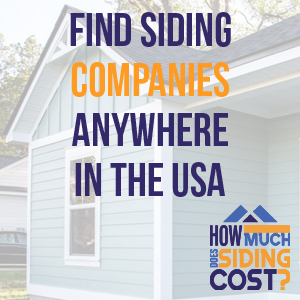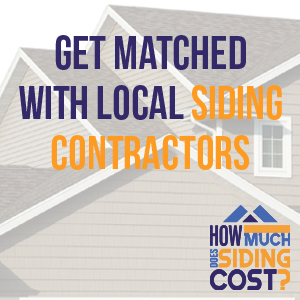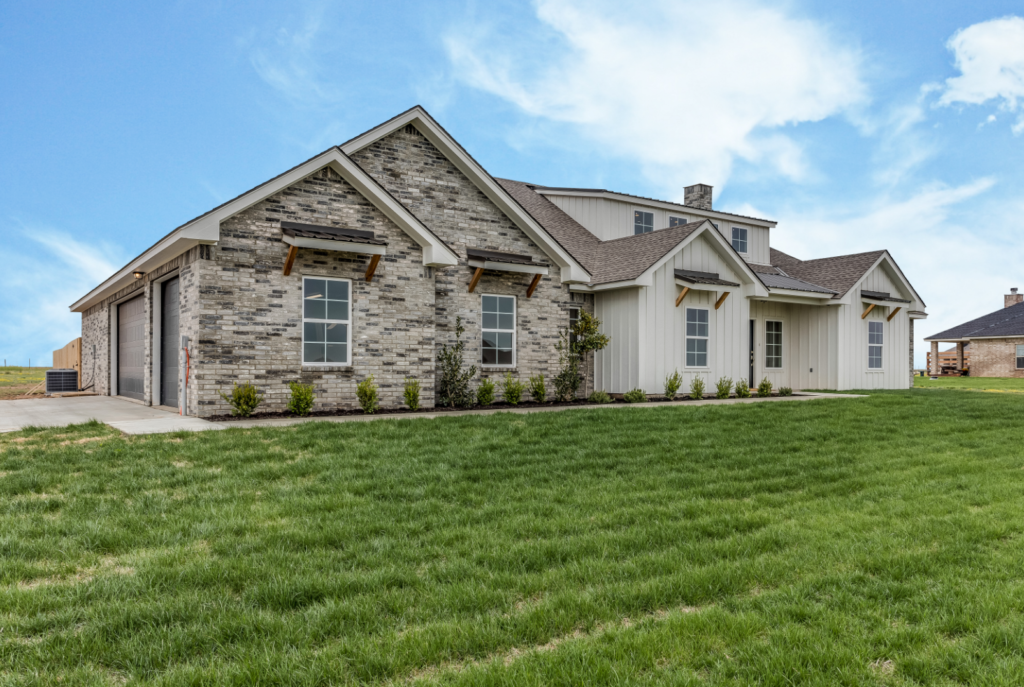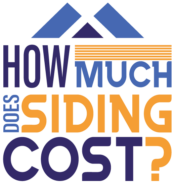
Does Siding Increase the Value of a Home?
When it comes to improving the value of your home, one of the most overlooked yet highly impactful options is siding. Siding not only improves the aesthetics of a home but also serves a functional purpose, protecting your home from adverse weather conditions and ensuring its structural integrity. In this blog, we will dive deep into the ways new siding can be beneficial, and explain how and why it increases the value of a home.
Enhancing Curb Appeal
First and foremost, new siding can drastically enhance the curb appeal of a home. The siding is one of the first things people notice when they approach a house. When the siding is new and well-maintained, it sends a message that the home is well cared for. This can be a significant factor for potential buyers and can contribute to an increased perceived value of the home.
Increasing Energy Efficiency
The siding of a home plays a critical role in its insulation and overall energy efficiency. If your home’s current siding is old and worn out, it could be allowing drafts into your home, leading to increased heating and cooling costs. On the other hand, new, well-installed siding can improve insulation, make your home more energy-efficient, and lead to significant savings on energy bills. Potential buyers often consider a home’s energy efficiency when determining its value, so new siding can be a significant selling point.
Low Maintenance
Many modern siding options such as vinyl and fiber cement require minimal maintenance, a feature that is particularly appealing to many potential buyers. This means that the homeowner will not need to paint or stain the siding regularly to keep it looking its best. Low-maintenance siding can be a great selling point and can certainly add value to your home.
Protecting Structural Integrity
Good-quality siding serves as a protective barrier against the elements, helping to maintain the structural integrity of the home. By keeping out moisture, siding prevents problems such as mold growth and wood rot. These types of issues can be expensive to fix and can cause serious structural damage if left unattended. By installing new siding, you can reassure potential buyers that the home is well-protected, thereby increasing its value.
Resale Value
According to the National Association of Realtors, homeowners can expect to recoup up to 76% of the cost of new vinyl siding when they sell their home. This makes new siding one of the most cost-effective home improvement projects when looking at the return on investment.

While siding may not be the first thing homeowners think of when considering ways to increase the value of their home, it is a home improvement project that offers significant benefits. From improving curb appeal and energy efficiency to reducing maintenance and protecting the home’s structural integrity, new siding can be a smart investment for homeowners looking to increase their property’s value.
Top Siding Materials to Increase Home Value
Choosing the right siding material can dramatically impact the value of your home. Not all siding materials are created equal – each type of siding has its own unique benefits and potential drawbacks. Here are some top siding materials that can significantly increase your home’s value.
Fiber Cement Siding
Fiber cement siding is a popular choice among homeowners due to its durability and visual appeal. This type of siding is made from a blend of cement, sand, and cellulose fibers. It is renowned for its ability to mimic the look of other materials such as wood or stone, providing a high-end appearance without the high maintenance or cost. Moreover, fiber cement siding is resistant to fire, rot, and insect damage, making it a great long-term investment.
Vinyl Siding
Vinyl siding is another top contender when it comes to increasing the value of your home. It is cost-effective, low maintenance, and comes in a wide array of colors and styles. The versatility of vinyl siding allows homeowners to customize their home’s exterior to their liking, significantly boosting curb appeal.
Aluminum Siding
Aluminum siding is a durable and affordable option that is resistant to fire, rot, and insect damage. Though it fell out of favor for a while, it’s making a comeback due to its long lifespan and eco-friendliness. Aluminum siding is also great for insulation, potentially saving homeowners on energy bills.
Brick Siding
For homes siding, brick is a classic and timeless choice. Brick siding offers exceptional durability and requires very little maintenance. While brick may be more expensive to install than other types of siding, its longevity and classic appeal can significantly enhance the resale value of a home.
Natural Wood Siding
Natural wood siding provides a beautiful and timeless look that many homeowners love. It can be painted or stained in any color, allowing for significant customization. However, it does require more maintenance than some other types of siding to keep it looking its best. Despite this, the natural beauty of wood can significantly increase a home’s value.

When choosing a siding material, it’s important to consider the climate and environmental factors in your area, as well as the overall look and style of your home. A well-chosen siding can greatly increase the value of your home, both in terms of monetary value and aesthetic appeal.
Enhancing Home’s Curb Appeal: Insulated Vinyl Siding and More
Enhancing your home’s curb appeal goes beyond merely painting the front door or manicuring the lawn. One of the most impactful ways to boost your home’s aesthetic and monetary value is by updating or replacing the siding. Here, we’ll delve into the benefits of insulated vinyl siding and other resilient options designed to withstand environmental challenges like strong and heavy winds.
- Insulated Vinyl Siding
Insulated vinyl siding has risen to prominence due to its low cost, high durability, and energy efficiency. This type of siding consists of standard vinyl siding with a layer of insulating foam on the back. The insulation increases the siding’s R-value (an indicator of thermal resistance), thereby helping to keep your home warmer in the winter and cooler in the summer.
Not only does this type of siding enhance energy efficiency, but it also offers an improved appearance. Insulated vinyl siding can mimic the look of natural materials, adding an upscale touch to your home without the high cost and maintenance typically associated with these materials.
- Siding for Strong Winds
If your home is located in an area prone to heavy winds, choosing the right siding material is crucial. Some materials, such as vinyl and aluminum, offer greater resistance to wind damage. These materials are designed to withstand strong winds, preventing wind-borne debris from damaging the home’s exterior.
Choosing a siding material with wind-resistant properties not only protects your home but also adds to its curb appeal by maintaining a pristine exterior even in harsh weather conditions. These characteristics are likely to be appealing to potential buyers, thus potentially increasing the resale value of your home.
- Using Natural Materials
Natural materials like wood and stone can greatly enhance your home’s curb appeal. They provide a classic and timeless look that can make your house stand out. However, they typically require more maintenance and may not be as resilient in the face of strong winds or extreme weather.
When choosing siding material, considering factors like cost, durability, maintenance needs, and local weather conditions is crucial. The right choice not only adds to your home’s curb appeal but also its overall value, making it a worthy investment in the long run.

Energy Efficiency and Siding: The Key to Lower Utility Bills
Choosing the right siding for your home is not only about aesthetics and durability; it’s also a critical decision in enhancing your home’s energy efficiency. The siding material can play a significant role in your home’s insulation, effectively reducing energy costs. Here’s how different siding materials stack up in terms of energy efficiency:
- Vinyl Siding: This common siding material has reasonable insulation properties. However, the energy efficiency can be dramatically improved by choosing insulated vinyl siding. This type features a layer of expanded polystyrene foam (EPS) that provides superior thermal insulation.
- Fiber Cement Siding: Fiber cement offers good insulation properties due to its thickness, helping to moderate the home’s internal temperature. While it doesn’t have the highest R-value (a measure of thermal resistance), it provides a solid balance between cost, durability, and energy efficiency.
- Wood Siding: Natural wood has excellent insulating properties due to its cellular structure. This can help keep your home warm in winter and cool in summer. However, it requires regular maintenance to maintain its efficiency and durability.
- Brick and Stone Siding: These materials are not naturally insulative but are often paired with a layer of rigid foam insulation during installation. When combined with this added insulation, brick and stone can be highly energy-efficient siding options.
- Aluminum Siding: Aluminum siding alone does not offer much in terms of insulation. However, similar to vinyl siding, there’s an insulated option available that significantly boosts its energy efficiency.
- Engineered Wood Siding: This type of siding is designed to offer the look and feel of real wood without the high cost and maintenance. It typically includes a layer of foam for increased insulation, making it a more energy-efficient choice than traditional wood.
When selecting siding, it’s crucial to consider your home’s overall insulation, including the walls, attic, and windows. Effective insulation from your siding can reduce the need for heating and cooling, leading to substantial energy savings over the lifespan of the siding. Be sure to consult with a professional to choose the most energy-efficient siding that fits your climate, budget, and aesthetic preferences.
Siding Maintenance and Durability: Understanding Long-Term Costs and Effort
When choosing your home’s siding, understanding its longevity and maintenance needs can help you gauge the true long-term costs. Let’s explore how different siding materials stack up in terms of durability and upkeep:
- Vinyl Siding: Vinyl siding is relatively low maintenance, only requiring a gentle cleaning once or twice a year. It can last up to 60 years, making it a cost-effective and durable choice. However, it can crack under extreme cold or fade after prolonged exposure to sunlight.
- Fiber Cement Siding: Fiber cement siding is extremely durable, resistant to both cold and hot weather, and can last upwards of 50 years with proper care. However, it requires repainting every 12-15 years.
- Wood Siding: While wood siding can last for decades if properly maintained, it requires regular upkeep, including sealing or staining every 2-5 years and regular checks for pests and rot.
- Brick and Stone Siding: Brick and stone sidings are incredibly durable, with a lifespan that can exceed 100 years. They require very little maintenance, usually only needing occasional cleaning. However, watch out for mortar joint deterioration, which will require repair.
- Aluminum Siding: Aluminum siding is resistant to fire, rot, and insects, but it can be prone to dents and may fade or chalk over time. With proper maintenance, it can last between 30 and 50 years.
- Engineered Wood Siding: Engineered wood siding needs less maintenance than real wood and is designed to resist fungal decay and pests. Depending on the brand and care, this siding can last between 20-30 years.

When considering siding materials, it’s important to balance the upfront costs with the ongoing maintenance costs and the siding’s expected lifespan. Factor in your willingness to undertake regular maintenance tasks or the cost of hiring a professional to do so. Your local climate should also influence your decision, as extreme weather conditions can affect the durability of your siding. Always consult with a professional to discuss the best option for your specific needs and circumstances.
The Siding Installation Process: What Homeowners Can Expect
Deciding to install new siding on your home is a significant investment. It’s important to understand what the process involves to ensure you’re prepared for what’s to come. Here’s a brief overview of what you can expect during the siding installation process:
Step 1: Consultation and Estimate
The first step in any siding installation process is a consultation with a siding professional. They’ll assess your home’s exterior, discuss your preferred siding material, and provide an estimate for the cost of materials and labor. This is the perfect time to ask any questions you have about the process.
Step 2: Removal of Old Siding
Before the new siding can be installed, the old siding must be removed. This involves carefully detaching it to avoid causing damage to the underlying structure of the house. Once the old siding has been removed, the contractors will inspect the home for any damage or issues that need to be addressed before proceeding.
Step 3: Preparation for New Siding
The next step involves preparing the house for the new siding. This may involve installing a weather-resistant barrier to protect your home from moisture damage, as well as applying insulation to increase the energy efficiency of your home.
Step 4: Installation of New Siding
Now comes the main event: the installation of the new siding. This process will vary depending on the type of siding you’ve chosen. Whether it’s vinyl, wood, or fiber cement, each material has a specific installation method to ensure it’s properly secured and able to protect your home.
Step 5: Cleanup and Final Inspection
Once the siding has been installed, the contractors will clean up the work area, removing any debris from the installation. They’ll then conduct a final inspection to ensure the siding has been installed correctly and that there are no outstanding issues.
Remember that every home and siding job is unique, so this is a generalized overview. The process may vary slightly based on the specific circumstances of your project. Always communicate with your contractor and don’t hesitate to ask questions to ensure you fully understand the process.

The Impact of Siding Material on Insurance Costs
When it comes to homeowners’ insurance, many factors can influence the cost of your policy. The material of your home’s siding is one such factor that can have a notable impact on your insurance premiums. Let’s delve into how different siding materials can affect your insurance costs:
Vinyl Siding
Vinyl siding is a popular choice for many homeowners due to its durability, low maintenance, and relatively inexpensive cost. Because of its resistance to damage from elements like wind and rain, insurance companies often view vinyl siding favorably, which could potentially lead to lower insurance premiums.
Wood Siding
Wood siding offers a classic and beautiful aesthetic. However, it is more susceptible to fire, pests, and weather damage compared to other materials. As a result, homes with wood siding can sometimes face higher insurance premiums due to the increased risk.
Fiber Cement Siding
Fiber cement siding is known for its durability and resistance to many common threats like fire, pests, and harsh weather conditions. These properties can make it more attractive to insurance providers, potentially leading to lower insurance costs. However, it’s important to note that fiber cement siding is often more expensive to install, which could offset some of these insurance savings.
Aluminum Siding
Aluminum siding is durable and relatively low maintenance, with good resistance to fire. This may be considered less risky by insurance companies, possibly leading to lower premiums. However, aluminum can be prone to denting, which may need to be considered when discussing with your insurer.
Brick Siding
Brick siding is incredibly durable and has excellent fire resistance, which can lead to lower insurance premiums. However, brick can be more expensive to repair if it does become damaged, which is a factor that your insurance company may take into account.
Remember, while the type of siding you choose can impact your insurance premiums, it’s just one of many factors that insurers consider. Other variables, such as the location of your home, its age, and your personal credit history, can also significantly affect your homeowners’ insurance costs. Always consult with your insurance provider to understand how your choice of siding may affect your premiums.

Regional Considerations for Siding: How Climate and Environment Impact Your Choice
Where you live plays a significant role in determining the type of siding that’s best for your home. Factors like climate, weather patterns, and local environmental conditions should be considered when choosing a siding material. Let’s explore how different regions might influence your siding selection:
- Cold Climates: For homeowners in cold climates with long, harsh winters, it’s crucial to choose a siding material that can withstand freezing temperatures, heavy snow, and ice. Insulated vinyl siding or fiber cement siding can be excellent choices in these conditions, as they provide additional thermal insulation and are resilient to cold weather damage.
- Hot and Humid Climates: In hot, humid climates, siding materials need to withstand heat and resist damage from moisture and pests. Fiber cement siding is a durable and rot-resistant choice for these conditions. It doesn’t warp in heat or absorb moisture like wood can, making it an ideal choice in areas with high humidity.
- Coastal Regions: If your home is located in a coastal region, you need siding that can stand up to salty air, strong winds, and potentially heavy rains. Vinyl or aluminum siding can be beneficial in these areas due to their resistance to salt corrosion and wind damage. However, fiber cement siding might be the most robust choice, thanks to its strength and durability against all types of weather conditions.
- Dry, Fire-Prone Areas: In regions prone to wildfires, choosing a fire-resistant siding material can provide an extra layer of protection. Brick and fiber cement siding are non-combustible and can provide excellent fire resistance, making them good choices for homes in these areas.
- Areas with High Winds or Heavy Storms: Regions that experience high winds or frequent heavy storms require siding that can withstand such demanding conditions. Fiber cement and aluminum siding are known for their durability and wind resistance, making them solid choices for homes in such regions.
Remember, choosing the right siding for your home is about more than just aesthetic appeal and cost. Taking your local climate and environmental conditions into consideration will ensure that your siding can stand up to the elements, provide necessary protection for your home, and serve you well for many years to come.
Color and Style Choices in Siding: Enhancing Your Home’s Aesthetic Appeal
Siding isn’t just a practical necessity for your home; it also makes a significant contribution to your home’s visual appeal. Choosing the right color and style of siding can elevate your home’s curb appeal and reflect your personal design aesthetic. Here’s how you can make the right choice:

Choosing the Right Color
The color of your siding can dramatically transform your home’s appearance. Here are a few tips to help guide your choice:
- Complement the Home’s Architecture: Certain architectural styles lend themselves to specific color palettes. For instance, a Victorian-style home might look best with a bold, vibrant color, while a modern home might benefit from muted, monochromatic hues. Do some research on the traditional colors associated with your home’s architectural style.
- Consider the Roof Color: Your siding should complement your roof color, not clash with it. For example, if you have a brown roof, a warm siding color like beige, cream, or a soft shade of green or blue might work well.
- Think About the Landscape: Consider your hovinylme’s surroundings. If your house is surrounded by lush greenery, a natural, earthy color for the siding might be appropriate. For homes in more arid environments, a brighter, bold color might make your home stand out.
- Use Online Tools: Many siding manufacturers offer online tools that let you visualize different siding colors on various home styles. These can be a great resource to help you decide.
Selecting a Siding Style
Beyond color, the style of your siding can also impact your home’s aesthetic. Here are some options:
- Clapboard: This is the most traditional style, featuring long, narrow planks laid horizontally with overlapping joints.
- Board and Batten: This style uses wider boards spaced apart with narrow battens covering the spaces in between, offering a rustic, historical look.
- Shake or Shingle: These offer a classic look, often associated with Cape Cod, colonial, and Tudor-style homes.
- Vertical Panel: Long vertical panels can create a clean, modern appearance.
Remember, your siding is one of the first things people notice about your home. By choosing a color and style that complements your home’s architectural design and environment, you can ensure that your home makes a great impression from the curb.
Cost-Benefit Analysis: Understanding the Financial Impact of Your Siding Choice
While aesthetics are crucial, the financial implications of your siding choice are equally important. Not only will you need to consider the initial cost of the siding material and installation, but also the long-term costs associated with maintenance, durability, and the potential return on investment (ROI). Let’s compare some popular siding options in terms of these financial aspects:
Vinyl Siding
Initial Costs: Vinyl is one of the most affordable siding materials, with costs typicmally ranging from $2 to $7 per square foot installed.
Maintenance and Durability: Vinyl requires minimal maintenance, with an occasional cleaning often being sufficient. High-quality vinyl can last between 20-40 years, reducing the need for replacement.
ROI: According to the Remodeling Magazine’s Cost vs. Value report, vinyl siding replacement offers an average ROI of around 75%.
Fiber Cement Siding
Initial Costs: Fiber cement is more costly than vinyl, with prices ranging from $6 to $13 per square foot installed.
Maintenance and Durability: Fiber cement siding is known for its durability and can resist many common problems like termites and rot. However, it may need repainting every 10-15 years.
ROI: Despite higher initial costs, fiber cement siding offers an impressive ROI, often above 77%.

Wood Siding
Initial Costs: Wood siding is one of the more expensive options, costing between $7 and $12 per square foot.
Maintenance and Durability: Wood requires more maintenance, including regular painting or staining. However, with proper care, wood siding can last up to 100 years.
ROI: Despite its high initial cost and maintenance, wood siding can provide an ROI of around 77%.
Aluminum Siding
Initial Costs: Aluminum siding is relatively affordable, costing between $3 and $6 per square foot.
Maintenance and Durability: Aluminum siding is low maintenance and highly durable, lasting between 20-50 years with proper care.
ROI: Aluminum siding offers an ROI of around 77%, making it a cost-effective choice for many homeowners.
When choosing your siding, it’s essential to look beyond the initial costs. Consider factors like maintenance costs, durability, and the potential ROI to make a financially savvy decision. The right siding choice can increase your home’s value, reduce future expenses, and even save you money on homeowners’ insurance.
